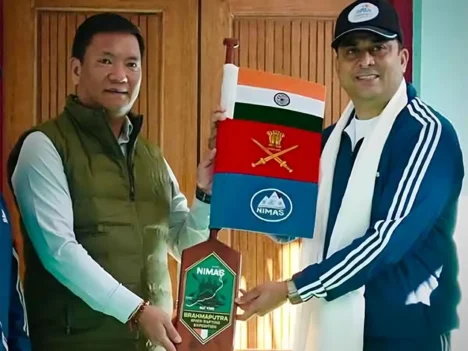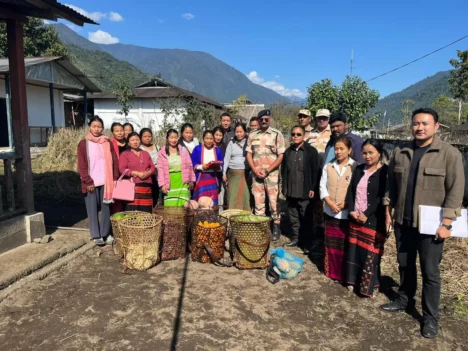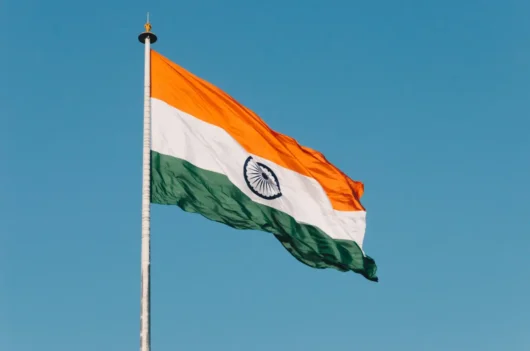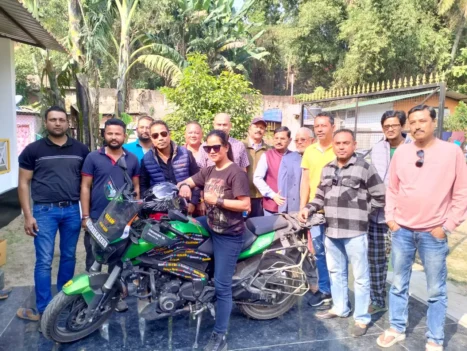Our species has evolved to work together in groups. Interaction with other humans is a necessary part of living. All sorts of people, from close relatives to casual acquaintances, engage in this kind of social connection. There are no limits to the social connections between humans. The borderlands are the ideal setting for this, as it is there that people from all walks of life can experience the whole spectrum of human relationships. The cultures, traditions, nationalities, and linguistics of the various peoples who live along the border are just as important as the commerce that crosses them. Yet, sometimes these relationships are entangled by the vagaries of security and politics across the boundaries.
Yes, the relationship between international boundaries is more than just a trading or economic aspect; it also has ethical and linguistic implications. Individuals living on both sides of the border – both in Tamu (Myanmar) and Moreh (Manipur) – have shared ethnic races that include Nepalese, Tamil, Meitei, and Kuki-Chin. Even before the border gate was sealed, they had a tight friendship despite being separated by an international boundary. For example, the Ngaihte clan of the Kuki-Chin tribe is dispersed over different states in Myanmar and India. An annual “Ngaihte Khawmpi” (Ngaihte Conference) is held each year to ensure tight ties between them, particularly those living around the border. Conference locations alternate between Tamu and Moreh. Linguistically, the majority of the Kuki-Chin languages spoken in Tamu and Moreh are mutually intelligible. These mutually understandable languages are advantageous; they pave the path for productive business activity between people and between the two countries. The advantages of language and cultural commonalities extend beyond all other borderlands in the business realm; these advantages also apply to Nepalese, Tamils, and Meiteis.

Photo Credit: The Borderlens
In 2020, the Indo-Myanmar border gate was sealed due to the Covid-19 breakdown. A lockdown was imposed, which affected both the bordering towns of Moreh (India) and Tamu (Myanmar). This deadly virus paralysed daily business activities, social interactions, and bonding between people on both sides of the border. The growing distance between the borderlanders was compounded by the military coup in Myanmar in February 2021, further impacting social interactions between borderlanders of the two neighbouring towns. The recent incident of the killing of the two youths from Moreh on July 5 in Tamu has only taken a turn for the worse.
A revisit of the gruesome killings
The two deceased youths—P Mohan (28) an autorickshaw driver and M Pyanar (32) a local trader, both residents of Moreh from Gamnom Veng, in ward no. 2 and ward no. 4 respectively, were gunned down by the Burmese military-backed Pyu Shaw Htee. The unprovoked killings of the two innocent youths were met with strong condemnation and protests in Moreh. No sooner the news of the killings begun to spread, all shops and business establishments in Moreh two-downed their shutters as a mark of protest, with vehicular movement also coming to a standstill. Peaceful protests were initiated by the Tamil Sangam, an organisation in Moreh town which works for the welfare of the Tamil residents there.
To get a clearer understanding of what transpired and the impacts thereupon, contacts with Maniam Balaji the General Secretary of the Tamil Sangam was established. To a question on why the two youths sneaked into the neighbouring country at this time of political turmoil and heavy fighting between pro-democracy groups and the Burmese military junta, Balaji replied, “Mohan and Pyanar were invited to their close friend Sagar’s birthday party. In fact, Sagar requested Mohan to bring spices from Moreh. He intended to feed around 50-60 senior citizens at the monastery on the occasion of his birthday. The two carried the spices prepared by Pyannar’s family and left Moreh on their motorcycle around 8:30 a.m. On reaching the Asian Highway 1 road in Tamu, both of them dialled Sagar’s phone number but could not contact him. They tried to speak to people along the way to get a sense of the direction to the monastery, and as both of them conversed fluently in Burmese and Kuki languages it wasn’t difficult to communicate. However, that did not help much though, as they made futile attempts to trace the exact location of the monastery”.

Photo Credit: The Borderlens
According to Balaji the twosome met a Burmese lady who helped them connect with Sagar. Following this, the two youths set out for the monastery but lost their way, and to make matters worse, poor network connectivity prevented them from making any further contact with Sagar. Left with no other solutions the two youths are said (as narrated by Balaji from what he heard from local villagers in Tamu) to have consciously made several rounds of some local areas. However, their continuous movements across these localities arouse suspicion in the minds of the Burmese military-backed militia – Pyu Saw Htee – whose members gheraoed them and began questioning them on their possible links with Burmese pro-democracy groups.
The Pyu Saw Htee interrogated them on their possible links with pro-democracy sources, and in all their honesty, both responded in the negative. But their honesty failed to dent the minds of the Burmese militia, which responded by shooting dead the two youths. On hearing the news, the Tamil Sangam approached the police and army officials to bring back the bodies of the two youths to their hometown in Moreh. Soon after, information began doing the rounds that the Myanmar government would hand over the dead bodies to the Indian government the following day, at around seven in the morning. But that was not to be, as Balaji recalled how “the Myanmar government has betrayed us, and buried the dead bodies early in the morning”. Thus, in all fairness it is understandable when the likes of Balaji and others claim that the Myanmar authorities action is tantamount to violating international human rights laws. “Not to mention that even spies and prisoners of war are not subject to such a fate, and are investigated before any call for drastic action,” is how they describe the actions on the other side of the border.
The aftermath and the impacts
On a personal note, I want to say that my talk with Balaji got me emotional, as I was trying hard to fathom the psychological impact of the killings on the residents among the borderlands on both sides. For instance, what is the present state of border security? The answers were there in front of us all. Firstly, there was a palpable fear in the minds of the two border communities and it looked very uncertain. Prior to the incident, even with heavy security and checking at the border crossings, Burmese nationals could carry out informal business in the ‘Morning Bazaar’, at Moreh. But, after the killings, it has become harder for Burmese nationals to enter Moreh to do business. “Doing business in Moreh has become a risky proposition,” said a local trader from Moreh.

Photo Credit: The Borderlens
Locals like Puia, an executive member of the Village Committee in Moreh, feel that “The tragedy has aroused tremendous dread among the inhabitants of Moreh.” “I used to deliver medicine and basic necessities to my ailing grandmother in the next village. But now I don’t have the courage to go because my life is in danger, and shooting could happen at any time, ” he says. Things have changed for the worse since the incident. Puia remembers that, as of early January this year, commuting from Moreh to neighbouring villages in Tamu was not a problem. “But now, one needs to produce a valid-ID card, and the purpose and place of travel needs to be recorded at the security check posts.” Not only that, even movement within villages connected to Moreh town is strictly monitored. One would dare say the onus for this should be on the Burmese military, for they did not follow standard security protocols as provided by national and international laws while dealing with the two local youths from
Moreh and instead decided to take matters into their own hands.
In all of this however, it is important to bring to the fore one positive feature, which has a lot to do with the close ethnic connectivity and people-to-people connections spread across the borders. For example, in the aftermath of the killings, there weren’t any communal problems, nor were there any reports of hatred across communities. This is what makes life in the borderlands so different and crucial when it comes to understanding various security paradigms.

Photo Credit: The Borderlens
However, for the borderlands, life has to go on and in spite of the evolving dynamics along the frontiers, they still have to find a way to manoeuvre through the challenges and barriers and connect with their friends and ethnic cousins across the border, sometimes to buy and sell goods and at other times to contribute to the well-being of each other. So, even with the heightened security on both sides, to see a Burmese national or a resident of Moreh riding on the Chinese Kenbo motorcycles and moving in and out of the border through unmanned routes is no surprise. But the question is how does this help or not help the evolving security situation across our borders. Especially as the Burmese military continues to engage with fighters of the People’s Defence Force (PDF) in and around Sagaing and parts of the Chin State of Myanmar.






